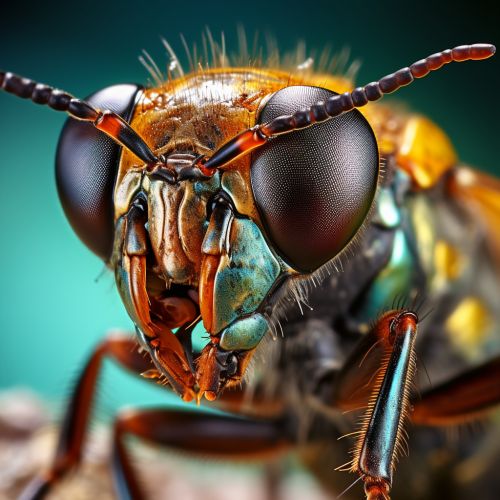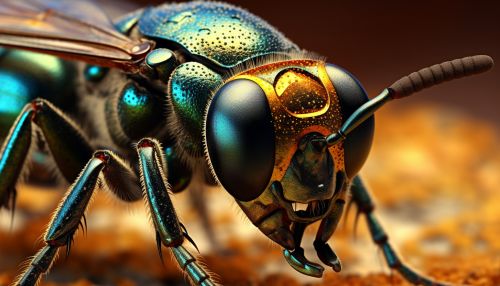Mechanisms of Biogenic Amine Signaling in Insects
Introduction
Biogenic amines are a class of neurotransmitters that play a crucial role in the physiological and behavioral processes of insects. These amines, which include serotonin, dopamine, and octopamine, among others, are involved in a wide range of activities such as feeding, reproduction, learning, and aggression. This article delves into the mechanisms of biogenic amine signaling in insects, providing a comprehensive and detailed understanding of this complex process.


Biogenic Amines in Insects
Biogenic amines are organic compounds derived from amino acids that act as neurotransmitters in the nervous system of insects. They are synthesized in the neurons and stored in vesicles until they are released into the synaptic cleft. Once released, they bind to specific receptors on the postsynaptic neuron, initiating a series of intracellular events that lead to a physiological response.
Serotonin
Serotonin, also known as 5-hydroxytryptamine (5-HT), is a monoamine neurotransmitter synthesized from the amino acid tryptophan. In insects, serotonin plays a vital role in the regulation of mood, appetite, and sleep. It also influences various behaviors such as aggression, mating, and learning.
Dopamine
Dopamine is another important biogenic amine in insects. It is synthesized from the amino acid tyrosine and is involved in the regulation of movement, reward, and pleasure. Dopamine also plays a crucial role in modulating the insect's response to various environmental stimuli.
Octopamine
Octopamine, derived from the amino acid tyrosine, is considered the insect equivalent of norepinephrine in mammals. It plays a significant role in the regulation of insect behavior, particularly in response to stress. Octopamine also influences processes such as learning, memory, and locomotion.
Mechanisms of Biogenic Amine Signaling
The mechanisms of biogenic amine signaling in insects involve a series of complex processes that begin with the synthesis of the amines and end with their degradation or reuptake. These processes are regulated by various enzymes and proteins, ensuring the proper functioning of the insect's nervous system.
Synthesis and Storage
The synthesis of biogenic amines in insects begins with the conversion of amino acids into their respective amines. This process is catalyzed by specific enzymes, such as tryptophan hydroxylase for serotonin and tyrosine hydroxylase for dopamine and octopamine. Once synthesized, the amines are stored in vesicles within the neuron, ready for release.
Release and Receptor Binding
Upon receiving a signal, the neuron releases the stored biogenic amines into the synaptic cleft. These amines then bind to specific receptors on the postsynaptic neuron, triggering a series of intracellular events. The type of response elicited depends on the type of amine and the receptor it binds to.
Degradation and Reuptake
After binding to the receptors, the biogenic amines are either degraded by enzymes or reabsorbed by the neuron in a process known as reuptake. This ensures that the amines do not remain in the synaptic cleft for an extended period, preventing overstimulation of the postsynaptic neuron.
Role of Biogenic Amines in Insect Behavior
Biogenic amines play a crucial role in the regulation of insect behavior. They influence a wide range of activities, from feeding and reproduction to learning and aggression. Understanding these roles can provide valuable insights into the complex behaviors exhibited by insects.
Feeding Behavior
Biogenic amines, particularly serotonin and dopamine, are known to regulate feeding behavior in insects. They influence various aspects of feeding, including food search, food intake, and satiety.
Reproductive Behavior
In many insect species, biogenic amines play a vital role in reproductive behavior. They influence mating behavior, egg-laying, and parental care, among other reproductive activities.
Learning and Memory
Research has shown that biogenic amines, particularly dopamine and octopamine, are involved in the regulation of learning and memory in insects. They influence processes such as associative learning, memory formation, and memory retrieval.
Aggressive Behavior
Aggressive behavior in insects is also regulated by biogenic amines. Studies have shown that serotonin and octopamine, in particular, play a crucial role in modulating aggression in various insect species.
Conclusion
Biogenic amine signaling is a complex process that plays a crucial role in the physiological and behavioral processes of insects. These amines, synthesized from amino acids, act as neurotransmitters, influencing a wide range of activities from feeding and reproduction to learning and aggression. Understanding these mechanisms can provide valuable insights into the complex behaviors exhibited by insects and may have potential applications in pest management and other areas of entomology.
